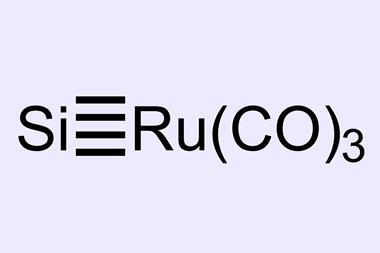Philip Ball discusses the contentious issue of C2 bonding. Dare we draw four lines?
‘There is no better, there is no more open door by which you can enter into the study of natural philosophy than by considering the physical phenomena of a candle.’ This is, of course, Michael Faraday declaring his love for the subject of the ‘chemical history’ of the candle – history being used here in its old sense of a collection of facts. Faraday’s six lectures on the topic at the Royal Institution gave rise to the annual tradition of Christmas lectures that have continued ever since. He might seem today to be stretching a point, but as a route into chemistry the candle flame still takes some beating.
The combustion of carbonaceous material turns out to be far more chemically complex than even Faraday anticipated, involving a panoply of intermediates and products that are still being studied. One of these – diatomic carbon, C2 – is responsible for the blue glow of flames, as reported by Faraday’s contemporary, physicist William Swan, in 1857.1 These molecules are probably involved in the formation of fullerenes,2 and they are certainly important in interstellar chemistry, where they may comprise a stage on the road to carbon-based life. They are also present in the comas of comets, where the ‘Swan bands’ may be one of the dominant sources of cometary light. In other words, C2 is no exotic curiosity but an important chemical species.
All the more surprising, then, that the nature of C2 is still imperfectly understood and has recently sparked extensive debate in the chemical literature.3–7 The question seems simple: how are the two atoms bonded? Commonly, C2 is shown with a double bond and two lone pairs, implying a weaker link between the atoms than the triple bond of acetylene. But theoretical chemist Sason Shaik of the Hebrew University of Jerusalem, Israel, and his coworkers recently used quantum-chemical calculations to claim that the carbon–carbon bond is in fact quadruple, challenging conventional wisdom that triple-bonding represents the limit for main-group elements.3
The question seems simple: how are the two atoms bonded?
This conclusion built on Shaik’s earlier work showing that C2 can be considered a triply bonded diradical, with the two unpaired electrons on each carbon occupying orbitals directed outwards in opposite directions along the molecular axis.4 That arrangement would seem to preclude any bonding interaction between them, but the team’s subsequent calculations showed that even in this configuration they can contribute a binding energy that is about 15% that of the molecule’s ‘internal’ bonds.
Roald Hoffmann, who proclaims C2 his favourite molecule and has worked on it for years, then stepped into the discussion, resulting in a freewheeling three-way ‘trialogue’ between Hoffmann, Shaik and Shaik’s collaborator Henry Rzepa of Imperial College London, UK, published in Angewandte Chemie (which is delightfully relaxed about traditional formats).5 The result is a fascinating tutorial about bonding and chemical reactivity: a perfect illustration of Faraday’s claim that the candle is an ideal introduction to understanding the universe.
Rzepa suggests an intriguing way to consider the fourth bond: because of the three electron pairs already present in the internuclear region, quantum correlation effects force the fourth pair to reside outside this space, making it perhaps the first bond known to arise almost solely from electron correlation. It is weak, but ‘a bond is a bond is a bond,’ says Rzepa. However, Hoffmann holds back from fully agreeing with the quadruple bond: ‘I do and I don’t,’ he admits.
Now Gernot Frenking and Markus Hermann of the University of Marburg, Germany, have presented a case against Shaik’s quadruple bond.6 They point to the lower force constant and vibrational frequency for C2 compared to triply bonded acetylene, and say that there is no reason to attribute the greater dissociation energy of C2 relative to C2H2 to a fourth bond. They also state that the apparent stabilisation in C2 relative to HC2 comes from a change of the appropriate reference ground state. Shaik and colleagues consider and refute these suggestions in a further discussion, whose details space precludes mentioning here.7
This seems unlikely to be the last word. It makes one wonder about the current understanding of chemical bonding that there is not even a consensus about this apparently simple molecule. That is not to say that the tools are inadequate; rather, they merely have different virtues. The published debate ends with a discussion about the merits of the approach to chemical bonding called quantum theory of atoms in molecules.8 Some insist this is the most rigorous way to understand bonding, others regard it merely as one tool among many. Hoffmann has criticised it for failing to make useful predictions about molecular geometry, but perhaps most of all for its failure to connect with the intuitions that guide synthetic chemists toward new compounds and reactions. What matters, he says, is not just formal rigour, but pragmatic chemical understanding.












No comments yet